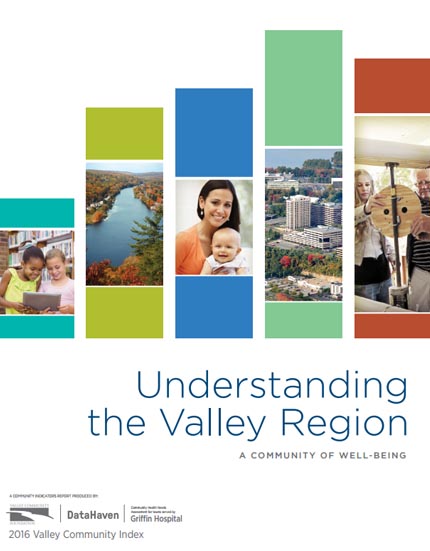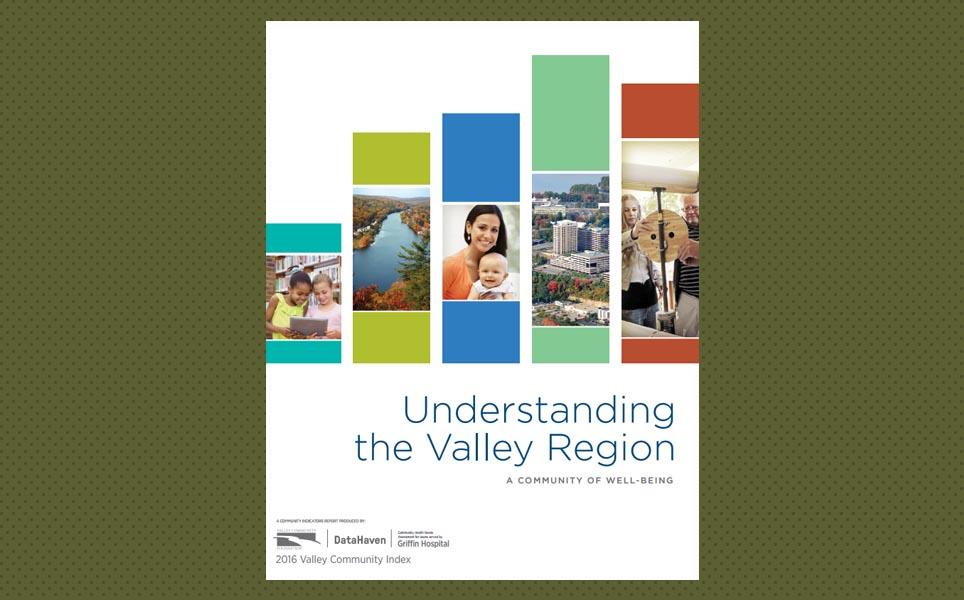Authored By
Mary Buchanan, Mark Abraham (DataHaven)
Date
October 10, 2016
Partners
Valley Community Foundation, Griffin Hospital
This report is part of an ongoing, 20-year tradition of analyzing the economy, health, and quality of life of the Valley region. The effort has included the 1996 Healthy Valley Report, the 2001 Mt. Auburn Report, the Yale-Griffin Prevention Research Center Community Health Profile, the 2010 Valley Cares Report, the 2013 Griffin Hospital Community Health Needs Assessment, and the Naugatuck Valley Health District’s 2013-2015 Community Health Improvement Plan. In 2014, in response to the local desire for more comprehensive data collection, the Valley Community Foundation convened a new Advisory Committee and engaged DataHaven to produce The Valley Now: A 2015 Snapshot, a brochure on baseline indicators of community well-being.
The 2016 Valley Community Index: Understanding the Valley Region report is written by Mary Buchanan and Mark Abraham of DataHaven, with assistance from staff at the Valley Community Foundation. It relies on data from federal, state, and local government agencies, as well as information collected directly from more than 1,000 Valley residents as part of the statewide 2015 DataHaven Community Wellbeing Survey. The report also serves as a Community Health Needs Assessment for Griffin Hospital.
An 8-page executive summary of the full report is also posted on the Valley Community Foundation website.
For errata, please see the bottom of this page.
Example page from the 2016 report
Errata
The file posted on this site is the same as the original (2016) printed version of the document. Rather than correcting the electronic file, any known typos or errors in this version of the report will be reported below. If you find an error, please let us know!
1. On page 47, the median home value for the Valley in 2014 was reported incorrectly. The correct value is $276,518. The value for the 7 Valley towns is calculated based on the median of each town weighted by the number of owner-occupied households in each town.













